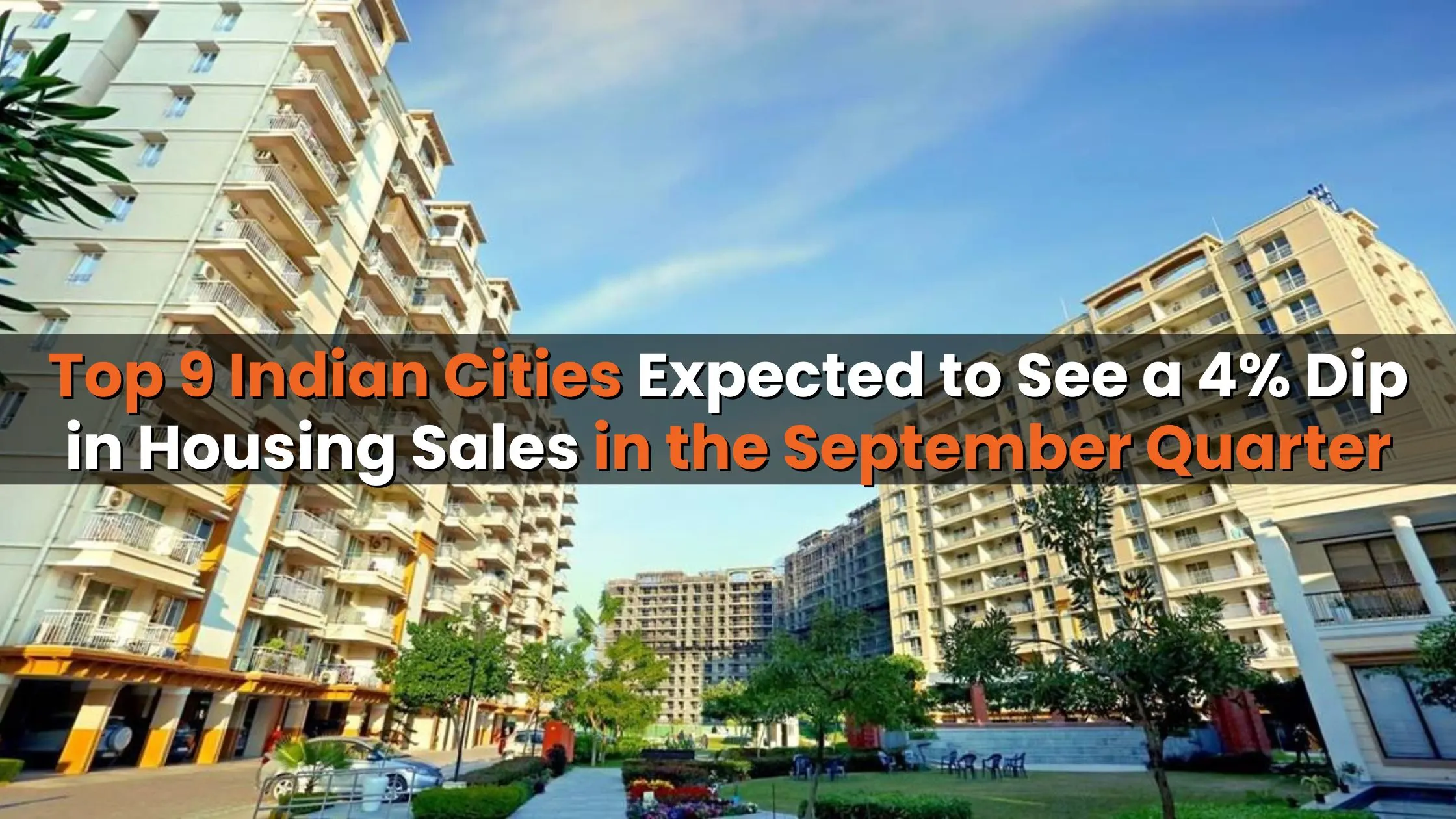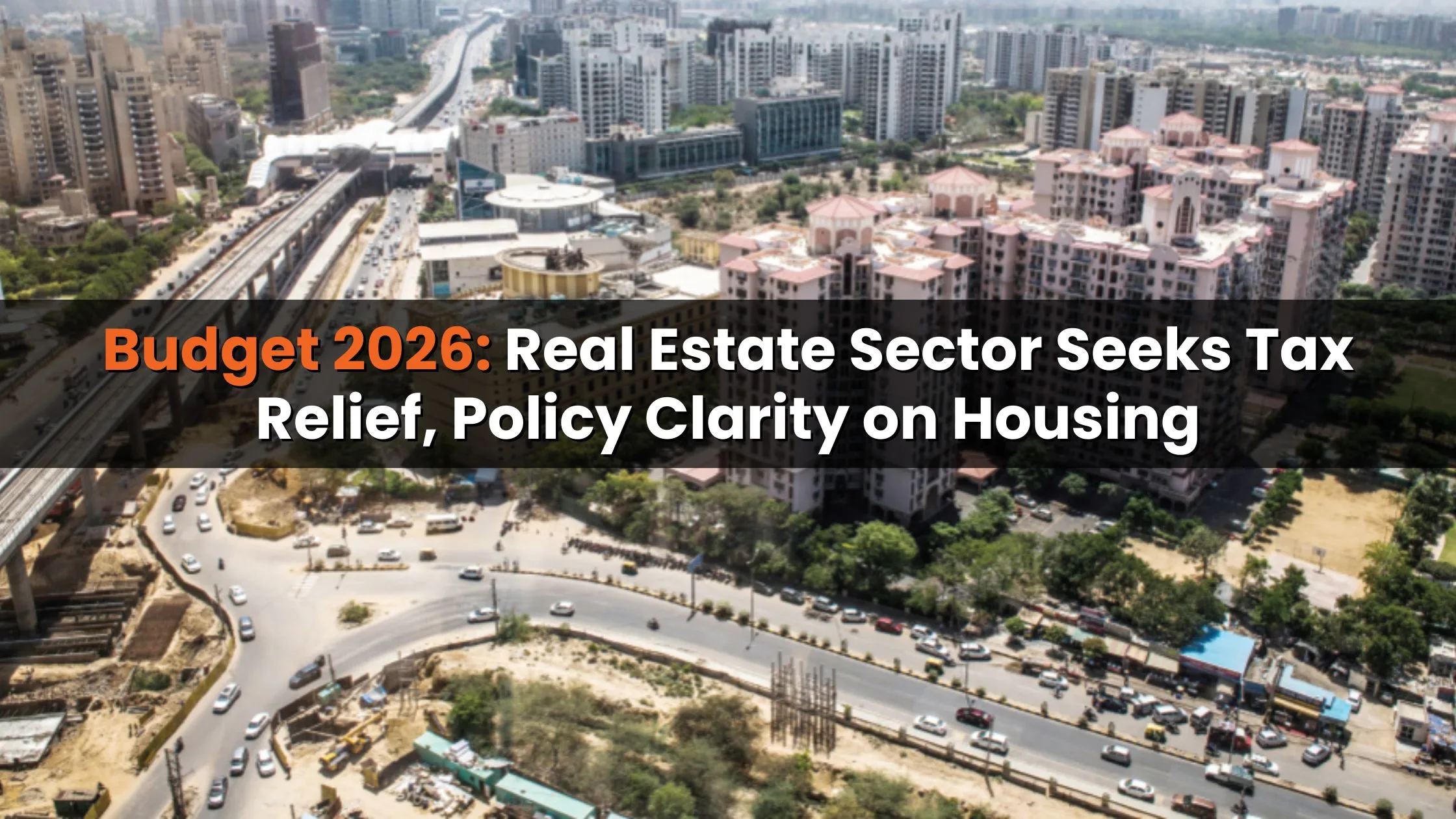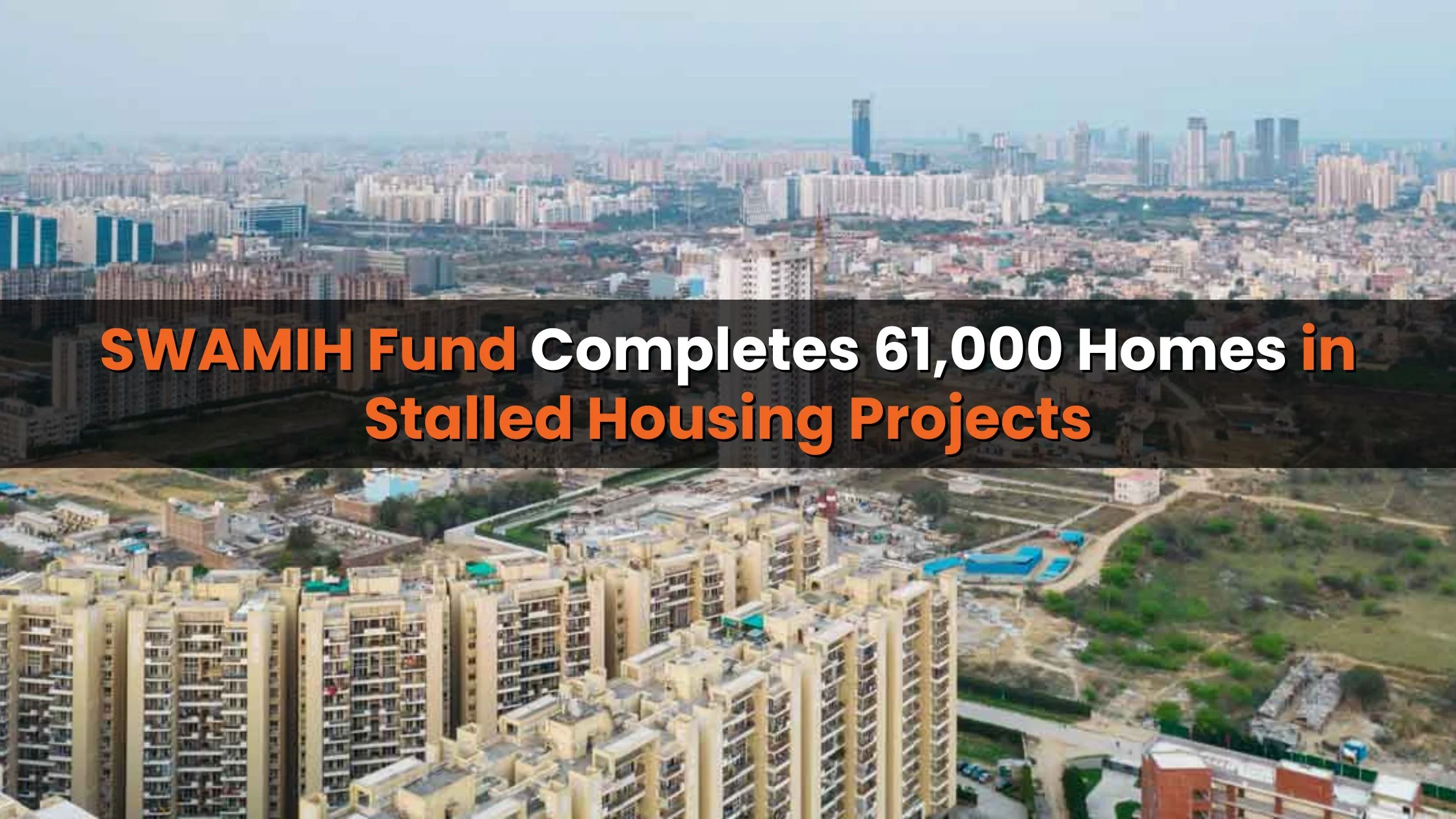Table of Content
The Indian housing market, which has seen steady momentum over the past two years, is now experiencing a slight slowdown. According to data released by real estate analytics firm PropEquity, housing sales in the September quarter across the top nine Indian cities are expected to dip by 4% year-on-year (YoY), settling just above the one lakh-unit mark. While the slowdown may raise eyebrows, experts believe this is a seasonal blip rather than a long-term trend. Interestingly, the dip is uneven across regions, with some cities recording sharp declines while others continue to post robust growth.
Overall Market Performance
As per PropEquity’s report, housing sales in the September quarter (July–September 2025) are projected to touch 1,00,370 units compared to 1,05,081 units sold during the same period last year. This modest decline highlights the cyclical nature of real estate activity, especially during the monsoon months and the Shraadh period, which is traditionally considered inauspicious for property purchases.
While sales have seen a dip, the number of new launches has also remained subdued. New housing supply is expected at 92,229 units in Q3 2025, reflecting a 10% decline on a quarter-on-quarter basis. Despite this, industry experts highlight that sales continue to outpace new launches, indicating sustained demand and absorption.
Also Read: Will Buying a Home Get More Affordable with GST Rate Cuts Starting Navratri 2025?
Cities with Declining Sales
The slowdown in housing sales in the September quarter is largely being driven by Maharashtra’s key real estate hubs Mumbai, Thane, Navi Mumbai, and Pune.
- Thane has witnessed the steepest fall, with sales projected to decline 28% to 14,877 units, compared to 20,620 units in the year-ago period.
- Pune is expected to record a 16% fall, with sales dropping from 21,066 units to 17,762 units.
- Mumbai, one of India’s largest real estate markets, is set to see sales dip by 8%, from 10,480 units to 9,691 units.
- Navi Mumbai is projected to see a 6% decline, falling to 7,212 units from 7,650 units last year.
Experts attribute these declines to slower absorption in high-priced micro-markets, oversupply in certain segments, and cautious consumer sentiment in Maharashtra. These regions have historically been heavyweights in India’s real estate activity, and their contraction has contributed significantly to the overall dip in housing sales in the September quarter.
Cities with Growth in Sales
While western India is witnessing a slowdown, several other cities are showing resilience and even strong growth in residential demand.
- Bengaluru is projected to record a 21% increase, with sales rising to 16,840 units compared to 13,966 units last year.
- Kolkata tops the growth chart with a 25% surge in sales.
- Chennai is expected to post a 16% rise, reflecting growing interest from homebuyers.
- Delhi-NCR is also likely to see steady growth of 4%, with sales estimated at 10,990 units compared to 10,539 units.
- Hyderabad is projected to register a 4% rise in sales, touching 12,860 units from 12,311 units in Q3 2024.
The strong performance in Bengaluru, Chennai, and Kolkata indicates a shift in homebuyer preference towards southern and eastern India. Affordability, IT-driven demand, and infrastructure improvements are contributing to steady growth in these regions.
Why the September Quarter is Usually Weak
Historically, housing sales in the September quarter tend to be weaker compared to other periods of the year. This is primarily due to:
- Monsoon Season: Heavy rains across India often slow down site visits, new project launches, and buyer activity.
- Shraadh Period: Considered inauspicious for making major purchases, this cultural factor reduces real estate transactions.
- Seasonal Trends: Buyers generally prefer making property purchases during the festive season in Q4, when developers also launch attractive offers.
Thus, the current slowdown fits into a broader cyclical pattern rather than being a sign of structural weakness in the housing market.
New Launches in the Market
On the supply front, PropEquity data suggests that new housing launches will remain muted in Q3 2025. At 92,229 units, new supply has dropped below the 1 lakh mark, representing a flat YoY performance and a 10% decline compared to the previous quarter.
However, the fact that sales continue to exceed new launches is a positive sign for developers. It suggests that unsold inventory is being absorbed at a steady pace, which prevents oversupply pressures from building up in the market. This trend also indicates that developers are becoming cautious, preferring to balance supply with actual demand rather than pushing aggressive new launches.
Industry Insights
Despite the headline dip, industry leaders remain optimistic about the health of the real estate market. Samir Jasuja, Founder and CEO of PropEquity, explained:
“The reason why we feel that the housing market remains healthy even though the new launches are coming down consecutively is because the sales continue to be higher than the new launches.”
This insight underscores the strength of end-user demand and suggests that while developers may be cautious with launches, buyers remain active in the market.
Also Read: Where to Invest in Real Estate in India 2025: Best Cities for Property Buyers
Future Outlook
Looking ahead, the festive season in the October–December quarter is expected to drive a rebound in both sales and new launches. Historically, this period sees a spike in housing demand as buyers view it as an auspicious time to invest in property. Developers also align their project launches and promotional campaigns with this period, which further boosts absorption levels.
While housing sales in the September quarter have slowed down, the long-term fundamentals of the Indian housing market remain strong. Urbanization, rising disposable incomes, and demand from first-time buyers and investors continue to fuel growth. With infrastructure projects progressing across metros and Tier 2 cities, the sector is poised for a stronger close to the year.
Conclusion
The PropEquity report highlights a 4% dip in housing sales in the September quarter across India’s top nine cities, settling at just over 1,00,000 units. The contraction is primarily driven by declines in Maharashtra’s key markets, Thane, Pune, Mumbai, and Navi Mumbai. However, southern and eastern markets such as Bengaluru, Chennai, and Kolkata continue to demonstrate resilience and growth.
While the September quarter is traditionally a weak season for real estate, industry experts believe the upcoming festive season will provide the necessary momentum for a rebound. The market remains fundamentally strong, and the current slowdown appears to be a temporary correction rather than a prolonged downturn.









Ans 1. The dip is mainly due to seasonal factors like the monsoon, the Shraadh period, and cautious buyer sentiment in high-priced markets, particularly in Maharashtra.
Ans 2. Sales dropped by around 4% year-on-year, settling at 1,00,370 units compared to 1,05,081 units in the same quarter last year.
Ans 3. Thane saw the steepest decline at 28%, followed by Pune at 16%, Mumbai at 8%, and Navi Mumbai at 6%.
Ans 4. Yes, Bengaluru, Kolkata, Chennai, Delhi-NCR, and Hyderabad all recorded growth, with Kolkata leading at 25%.
Ans 5. These regions benefit from affordability, IT-driven demand, and better infrastructure growth, which keeps buyer interest strong.
Ans 6. It coincides with the monsoon and Shraadh period, both of which slow down property purchases until the festive season picks up.
Ans 7. New supply was muted at 92,229 units, showing a 10% decline from the previous quarter and remaining flat year-on-year.
Ans 8. Not necessarily, as sales still outpaced new launches, showing strong absorption and healthy end-user demand.
Ans 9. Industry leaders believe the fundamentals remain strong, with urbanization, rising incomes, and steady end-user demand driving growth.
Ans 10. The October–December quarter is likely to see a rebound in both sales and launches, as buyers view it as an auspicious time to invest.